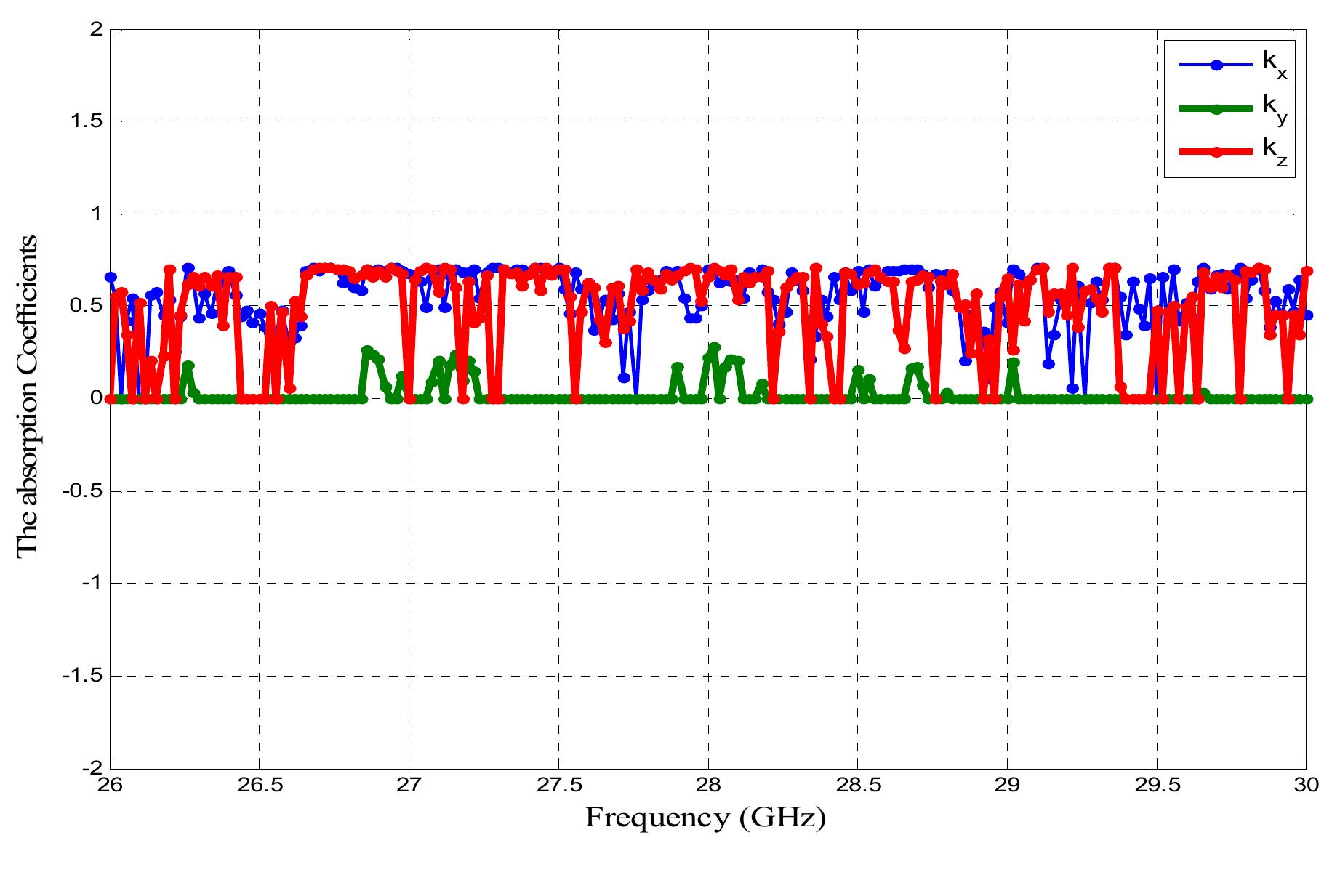Characterization of the refractive index of isotropic materials by three-detector microwave ellipsometry (original) (raw)
2019, International Journal of Innovation and Applied Studies
Abstract
A three-detector microwave ellipsometer is an experimental free-space bench for characterization of non-transparent materials. It is a non-destructive characterization technic working in oblique transmission in the frequencies range of 26 to 30 GHz. A vector network analyzer (VNA) is used as microwave source. The method is based on the determination of complex diagonal tensor which requires the measurement of the sample transmission coefficients. Calibration of the network vector analyzer is needed in order to correct the values of this coefficients due to the measurement errors. The aim of this paper is to show that One Path Two Ports calibration method is convenient for this technic.
Figures (9)
k.. is related to the component of the propagation vector k.. ,and é, are the elements of the tensor. isotropy, 1, = VE; , the elements of this tensor enter into the calculation of the following matrix The component of the propagation vector through x-axis is given by:
ambient-material interface at z = 0. Then, its inverse matrix Ll is given by the following expression: The output matrix L, , iS expressed according to the variation of the electric fields and the magnetic fields transverse to the The input matrix L, is obtained from the tangential components of the electric field and the magnetic field through the chubert defined two matrixes: an input matrix L, (incident matrix) and an output matrix L, (matrix of transmission). where @ is the angular frequency, C the light speed, and d_ the thickness of the material.
The three detectors ellipsometer can be configured for measurement in transmission and either oblique or normal incidence. In our case, we process in oblique incidence @ (@= 36° ). During the measurement process, the sample rotates around the direction of propagation with fixed step (2°) in order to obtain a set of measurements. Angular position Qis measured from the direction of the incident wave [5] Fig. 1.
The three intensities measured are deduced from corrected S,, (eq. 28).
The results of the 2 mm thick refractive indices and absorption indices obtained from the tensor results of complex permittivities after resolution of the inverse problem for a frequency of 26 GHz of the incidence wave are summarized in Table 1.
he following example shows the correlation between the model of interaction and the measurement. The PTFE refraction indices obtained when solving the inverse problem are almost equal to their values given in the several references [18], [19], [20], [5], where NV = Ve and & is the permittivity of the sample. As the PTFE is known as non-absorbent, it is quite normal that the absorption coefficients be low.
Fig. 7. Variation of absorption coefficients as a function of frequency The curve of Fig. 6 shows the evolution of the absolute indices as a function of the frequency and that of Fig. 7 also shows the evolution of the absorption coefficients as a function of frequency. For the case of the absolute index curve, we note that the values of the indices are between 1.41 and 1.45. These values are around the values of the absolute index of PTFE which i: of the order of 1.449. The absorption coefficients are close to 0 because the PTFE is known as an isotropic material not very absorbent. Therefore, we can say that the method of characterization we proposed makes it possible allows to determine the absolute index of PTFE along three directions.

Loading Preview
Sorry, preview is currently unavailable. You can download the paper by clicking the button above.
References (20)
- S. Biju Kumar, U. Raveendranath, P. Mohanan, K.T. Mathew, M. Hajian, and L.P. Ligthart, A simple free-space methode for mearsuring the complex permittivity of single and compound dielectric materials, Microwave Opt Technol Lett 26, 117- 119, 2000.
- F. Sagnard, F. Bentabet, and C. Vignat. In situ measurements of the complex permittivity of materials using reflection ellipsometry in the microwave band : Experiments (part II). IEEE Trans Instrum Meas 54, 1274-1282, 2005.
- A.M. Nicolson and G.F. Ross, Measurement of the intrinsic properties of materials by time-domain techniques, IEEE Trans Instrum Meas 19, 377-382, 1970.
- F. GAMBOU, B. Bayard and G. Noyel, Characterization of materiel anisotropy using microwave ellipsometry, Micorwave and Optical Technology Letters 53, pp 1996-1998, 2011.
- A. Moungache, B. Bayard, Abakar Mahamat Tahir, S. Robert, D. Jamon and F. Gambou, Measurement of refraction index of thick and non-transparent isotropic material using transmission microwave ellipsometry, Micorwave and Optical Technology Letters 57, Issu 4, pp 1006-1013, 2015.
- P. Yeh. Optics of anisotropic layered media: a new 4x4 matrix algebra, Surf. Sci, 96, 41-53, 1980.
- Mathias Schubert. Infrared Ellipsometry on Semiconductor Layer Structures, volume 209 of Springer tracts in Modern Physics. Springer, 2004.
- Hiroyuki Fujiwara. Spectroscopic Ellipsometry. National Institute of Advanced Industrial Science and Technology, Ibaraki, Japan, 2007.
- P. Yeh, Electromagnetic propagation in birefringent layered media : J. Optic. Soc. Am, 69, 742-756, 1979.
- R.C Jones, A new calculus for the treatment of optical systems, I. Description and discussion of the calculus, J.opt. SOC, AM. 31, 488-493, 1941.
- R. M. A. A. N. M. Bashara, Ellipsometry and polarized light, Amsterdam: North Holland: Elsevier Science B. V, 1996.
- M. Schubert, Polarization-dependent optical parameters of arbitrarily anisotropic homogeneous layered systems, Phys. Rev. B, 53, 4265-4274, 1996.
- M. Schubert, Theory and application of generalized ellipsometry, in Handbook of Ellipsometry, edited by H. G. Tompkins and E. A. Irene, Chapter 9, 637-717, William Andrew, New York 2005.
- B. Hall, VNA error models: Comments on EURAMET/cg-2/v.01, ANAMET Report 051, Measurement Standards Laboratory of New Zealand Lower Hutt, New Zealand, 2010.
- S. K. a. K. K. Masanobu Hirose, «Masanobu Hirose, SatAntenna Measurements by One-Path Two-Port Calibration Using Radio-on-Fiber ExtendedPort Without Power Supply» IEEE TRANSACTIONS ON INSTRUMENTATION AND MEASUREMENT, vol 56, N° 2,pp. 397-400, 2007.
- D. Rytting, "Network analyzer error models and calibration methods", Palo Alto, CA, Hewlett Packard Inc., 1998.
- A. Henze, "Incomplete 2-Port VNA calibration methods", INTI, (unpublished) 2014.
- K. P. M. H. J. R. R. S. Rajesh, "The effect of filler on the temperature coefficient of the relative permittivity of PTFE/ceramic composites", Physica B : Condensed Matter, vol. 406, no. 22, pp. 4312-4316, 2011.
- H.-C. L. a. Y.-D. L. Y.-C. Chen, "The Effects of Filler Content and Size on the Properties of PTFE/SiO2, Composites," Journal of Polymer Research, vol. 10, issu 4, pp. 247-258, 2003.
- M. J. P. M. a. M. S. G. Subodh, PTFE/Sr2Ce2Ti5O16 polymer ceramic composites for electronic packaging applications", Journal of the European Ceramic Society, vol. 27, no. 8, pp. 3039-3044, 2007.

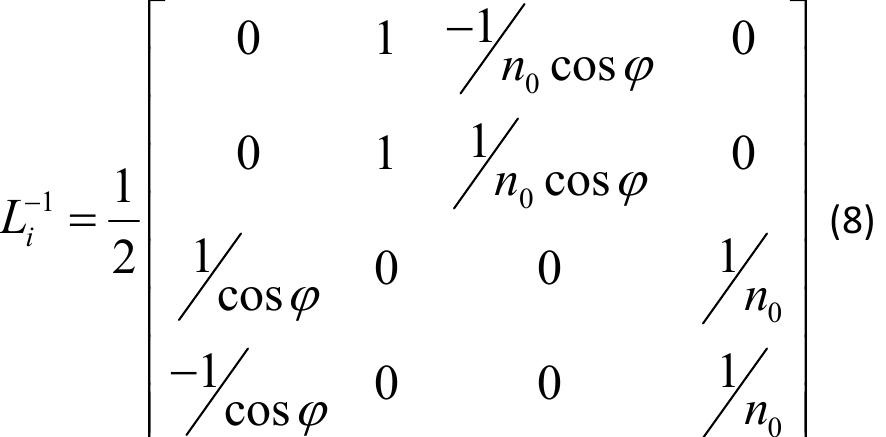
![The three detectors ellipsometer can be configured for measurement in transmission and either oblique or normal incidence. In our case, we process in oblique incidence @ (@= 36° ). During the measurement process, the sample rotates around the direction of propagation with fixed step (2°) in order to obtain a set of measurements. Angular position Qis measured from the direction of the incident wave [5] Fig. 1.](https://figures.academia-assets.com/99662081/figure_003.jpg) ](
](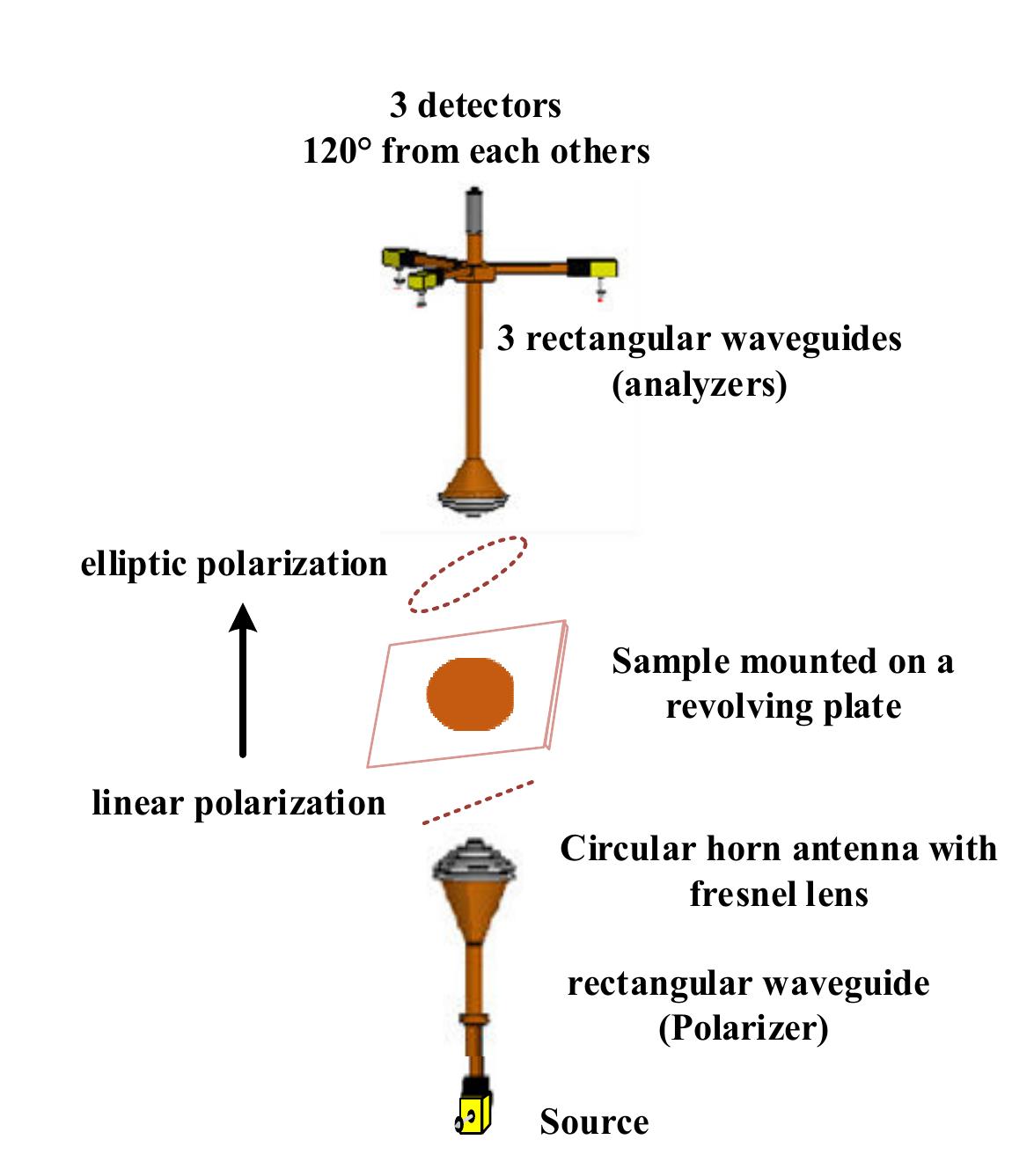
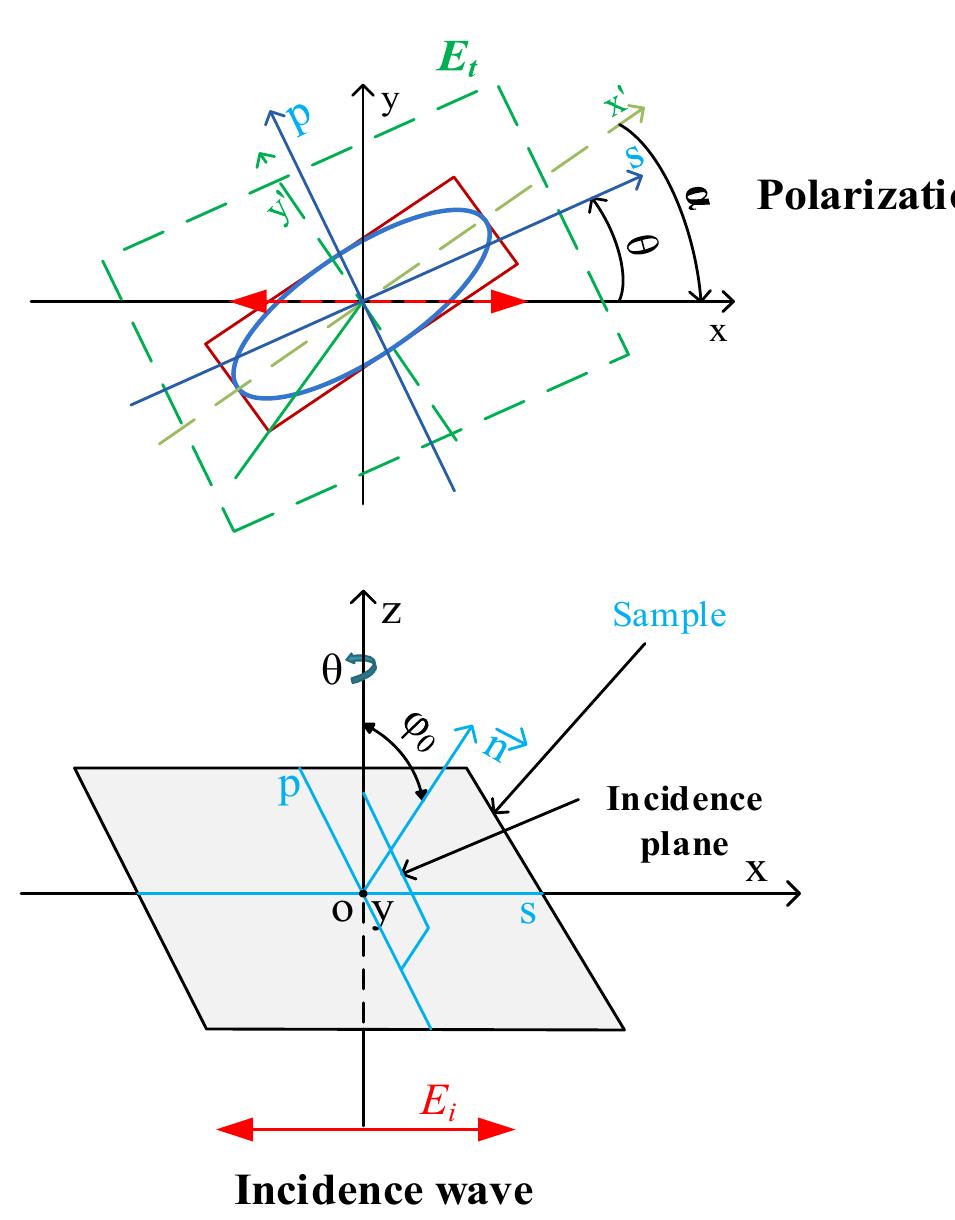
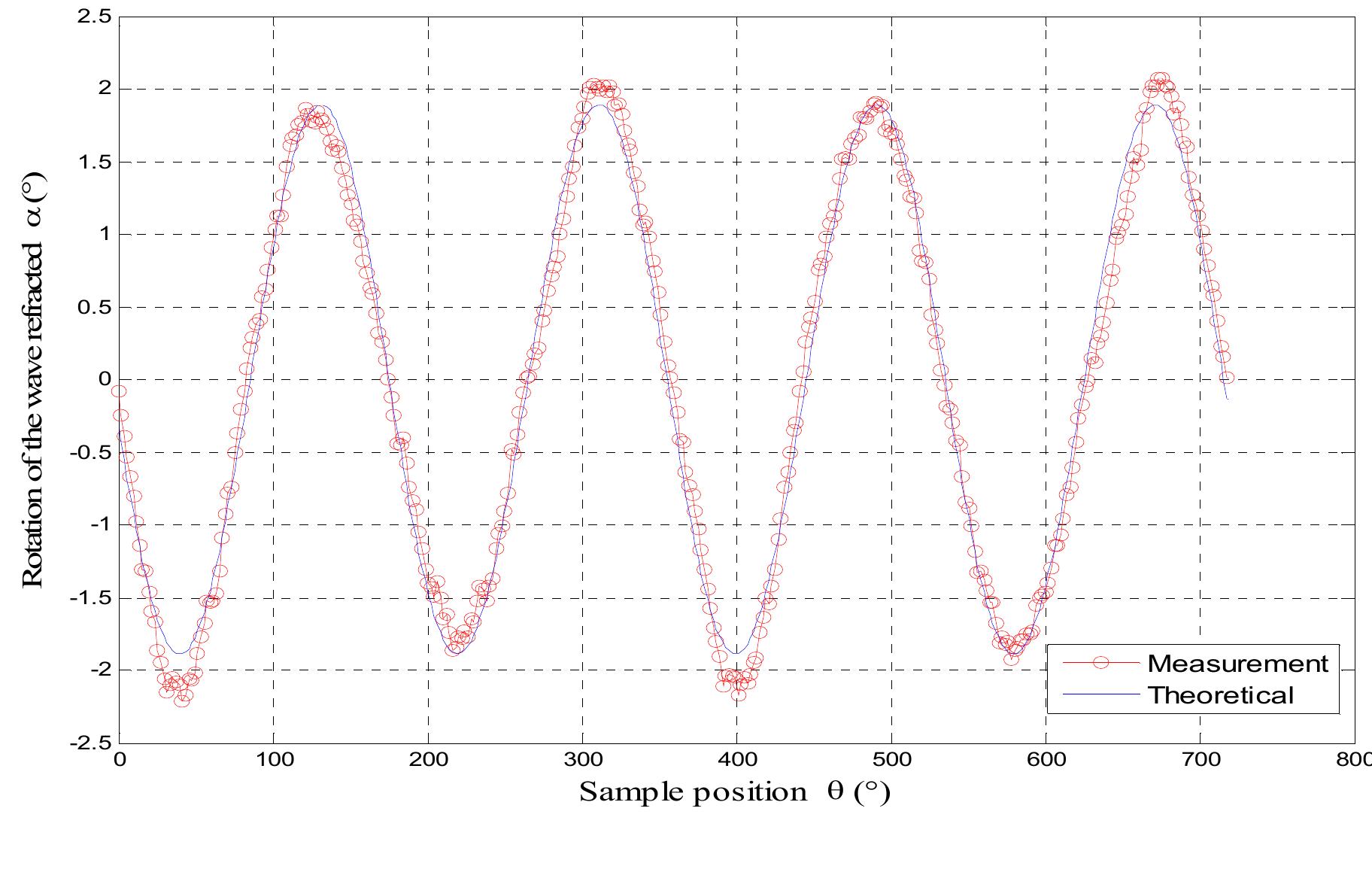

![he following example shows the correlation between the model of interaction and the measurement. The PTFE refraction indices obtained when solving the inverse problem are almost equal to their values given in the several references [18], [19], [20], [5], where NV = Ve and & is the permittivity of the sample. As the PTFE is known as non-absorbent, it is quite normal that the absorption coefficients be low.](https://figures.academia-assets.com/99662081/figure_007.jpg) ](
](